Risking what opens the way, interview with António Pinto Ribeiro
How do you pass from the dance to intercultural and post-colonial issues?
The relationship is neither direct nor casual. It turned out that, after my training in Philosophy, in the branch of Aesthetics, I was invited to create a field of theoretical studies in the very recent High School of Dance. I accepted and thought, “let’s go study.” And it was compulsive reading for years about everything there was on dance, body, and choreography. It could have been films, literature, visual arts, theatre, which have always been my areas of interest. The dance worked for years as the tip of an iceberg. Then, the enormous curiosity that I own took me to see shows, films, concerts that were not necessarily from the white and Western tradition, and the fascination for Africa and the cultural and ideological issues associated with that led me to multiculturalism. Initially, by the way, in a very innocent way.
This curiosity and openness to the world, is it your working method?
More than a method, it is a way of being that has very productive consequences. But I also believe that, at some point, a certain physicality and corporality inherent in these experiences evoked my childhood and adolescence in Africa, a fact that would motivate me to revisit some African countries.
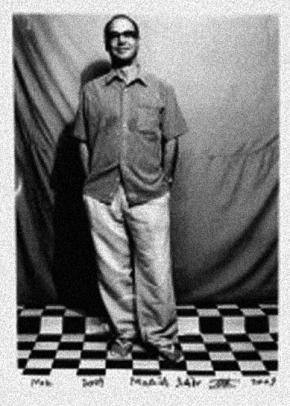 António Pinto Ribeiro. Photo by Malick Sidibé.
António Pinto Ribeiro. Photo by Malick Sidibé.
Until then how did you handle these memories?
They were very grateful memories, always associated with moments of joy and tranquillity, as I believe are those of all the children who lived in the cosmopolitan cities of Luanda and Lourenço Marques. The consciousness of the colonial war and the problems associated with it, as well as of colonialism, only happened in the late adolescence in Lisbon, during the Revolution. Therefore, in this need to revisit the past, another political consciousness was also implied and, above all, an awareness of cultural labour.
There was already a debate about post-coloniality in some European countries.
In 1989, I saw the exhibition Les Magiciens de la Terre, which was decisive in my interests for the approach to cultural and post-colonial studies, little known in Portugal in the 80’s.
The fact that there was no allusion to these issues in Portugal was certainly tied to the history of the Portuguese in Africa…
The problem was difficult to approach. Portugal had ceased to be a colonial empire for little more than ten years and universities were much dependent upon a very ethnocentric tradition of studies. The situation of African immigrant communities itself was far from what it is today. There was a racist stealth that did not let these communities be seen. Recently, I have been reading the manifesto of Culturgest, written in 1992, and intercultural and postcolonial issues were already part of the guidelines, although in a very naive way. But it was one of the most important lines of that program and it would lead my work, both the programming and the research. By strengthening this research field, I was able to make up a part of the program of non-Western works of art and worship, always refusing the idea of crafts and folklore.
(Far from being condescending, it was also necessary to take into account that the modes of production are different, and to integrate the works into their contexts)
It allowed to present a program that has to do with another contemporaneity. And it required explanation and contextualization. This research and investigation side, with the contributions of gender and post-colonial theories, was very important. But I always tried to avoid any kind of ghetto and discriminatory niche.
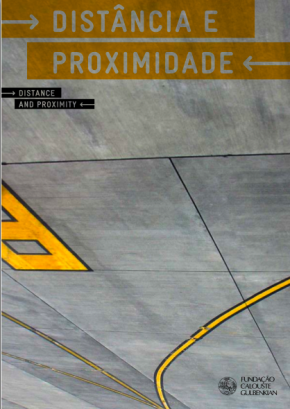 Cover of the program
Cover of the program
And it seems to me that adding reflection to exhibition is very much your way of dealing with this … Have you always been interested in crossing the theoretical world with artistic proposals?
I think it is essential, in all institutions, that the programming line is disclosed. In my mind the cultural program stems from a contract between the public and the artists or the authors. The programmer is a mediator but, in this contract he/she does, he/she must announce his/her mission to the partners, his/her options and the reason thereof. The cultural programming is based on an argument whose recipient is generally a universal audience. On the other hand, the public should have access to the keys for approaching what is exposed, its original mode of production, if it has already been presented in another context, etc. This makes everything much clearer and rescues the legitimacy it would not have if the public were not properly informed. This can be done in an interesting and creative way. The cultural programming is a fascinating activity that has as much risk as rare enjoyment and sharing. But it requires constant attention and care of the public, the artists, formers of critical mass and a permanent alert for the power that is acquired in this activity. An ongoing self-criticism that does not allow to replace neither the artist nor the public is a key factor, without yielding to mass-market tastes or to the pressure of those who think they represent the artists.
At the beginning was there resistance to your suggestions, distant from the Western canon?
Indeed, there was not enthusiasm. In the very first moment it would have been easier to follow already existing successful models. In the medium term they would have failed. I remember difficult situations, like in 1995. At Culturgest I presented, with António Loja Neves, the first great African film series: 114 films from the earliest times to the most current ones. I remember going one night to the auditorium: there were only nine people watching an extraordinary film. I was amazed and couldn’t understand why it was not interesting for the public. I think for several reasons: it was the beginning of Culturgest; in the imagination of people Africa amounted, for a certain wounded and traumatized community, to something they were not interested in reviving; for others, clearly because of ignorance, to amateurism - they did not expect great things from Africa. There were prejudices and a lack of practices that inhibited adherence. Miguel Hurst complained that there was no African theatre and I told him “set the minimum conditions of production and create a company and make a play.” He made “Museu do Pau Preto”, then moved to Angola and the company ended. That is, everything had to be created, in Portugal there was not an African community able to assume and explicit itself as a critical and artistic mass. I think the situation today is incomparably better. But it is fair to remember once again the continuous support of the Culturgest administration of that time in this risky and minority programming.
From the beginning until today with the program “Next Future”, do you perceive large differences in the reception?
There is no comparison. But it has to do with the globalization and cultural dynamics in Portugal, and with the changes in the world. The status that African music, more or less electronic or revival, has in the dance agendas and for the DJs is a striking phenomenon. This had a tremendous importance in attracting new audiences. And there is now a less “Rasta” vision of African music, which can reach other audiences, those who enjoy American, European and Brazilian things and can reconcile modernity with Africa.
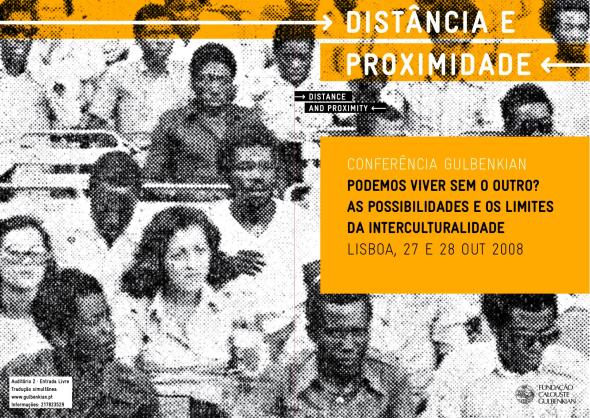 Cover of the program Can we live without the other?, 2008. Picture by Yonamine.
Cover of the program Can we live without the other?, 2008. Picture by Yonamine.
The intercultural discourse is already in force but still works a bit like “fashion”: it is little problematized in ordinary life and in cultural events that, to some extent, refuse the confrontation with the contentious aspects. What distinguishes you from the typical institutional and depoliticized approach to intercultural matters?
I don’t have the idea of a comprehensive, homogeneous and peaceful culture at all. There is perhaps no culture, but rather cultures that are in confrontation, conflict and sometimes in dialogue. A particular cultural expression results from an expectation that a group has in relation to the culture and the world, but also in its hereditary burden, in what, in the English-speaking world, is well called heritage. Of course, because of tradition or expectation, many of these cultures and groups come into conflict. It may be productive, since it is assumed as a normal part of democracy. As there is negotiation between groups and cultural expressions, where the intervention in the city and political and social issues cannot be replaced by culture, we find ourselves in a rich and democratic situation. Cultural productions should translate that.
What is, for you, true interculturalism?
In the broader concept, interculturalism can be a strategy of cultural negotiation that leads to the construction of a political project changing multicultural societies. And some misconceptions or demagogic claims must be avoided since now. First of all, conflicts and antagonisms can be resolved by culture: there is nothing wronger than this. Culture can be a platform of approach, a negotiating mode, but it will never solve the great antagonisms and the large differences in interests. In any case, we don’t have to move the specific problems of politics, economy and religion into culture. The second misunderstanding is to think that culture is something good and just for that it contaminates with goodness all human actions. An intercultural strategy may be useful in clarifying the conflicts and their reasons, but not always in eliminating them. Indeed, interculturalism does not imply a final kingdom of peace. It rather includes the possibility of a hopefully productive tension. A final misconception that arises is the tendency to divorce the cultural from the religious foundations or, conversely, to reduce everything to the religious aspect. From T. S. Elliot at least we should know that cultures are steeped in religion, which is reflected in cultural production. And that’s how we can speak of a Christian culture even in secular authors, or of Hindus artists, and how, therefore, interculturalism always carries the traces of interreligious relations.
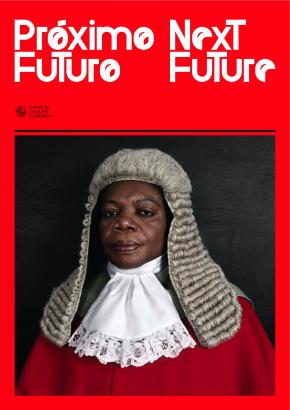 Cover of the magazine
Cover of the magazine
A fourth misunderstanding is to consider interculturalism as a dialogue between culturally homogeneous blocks, in which all members of a culture absolutely identify themselves. Actually, there are no culturally homogeneous blocks and in the same cultural region there are the rich and the poor, men and women. People identify and group themselves also by clubs, sexual orientations, professional associations, which allows, on the one hand, to build bridges of communication between different cultural regions and, on the other hand, to find cracks between members of the same regions.
Interculturalism is not, therefore, an ideology. It is an innovative strategy to coexist and co-inhabit in contemporary societies with diverse cultural and ethnic groups. Somehow, it is the most developed stage of democracy, but as this it requires a permanent and daily construction. It is also important to recognize that interculturalism is built from various starting points and cannot result from legislation or standardization brought in only by the host community. It supposes, therefore, a cultural negotiation whose boundary is the rejection of any breach, social, religious or sexual exclusion.
Finally, as much or more important than the existing cultural heritage of the diasporas, is to admit and even encourage cultural combination and syncretism, which constitute the best index of contemporary interculturalism. Only a cultural practice and a political program that fights the resentment against the past and focus on the future has to do with the practice of interculturalism.
By ordering the movies of the program So Close, So Far, to rescue the path of the objects, you refer to the gap in the memory of the same peoples from which those objects emerged. With so fast changes and assimilations, a sense of belonging was lost, hence the importance of the knowledge of the process and of what had been happening. Non-European cultures, in their self-esteem and identity (without falling into nationalism and traditionalism), need to know they had a huge influence on the historical and social processes for European culture to develop as it did.
There is an important thing: the last 20 years showed a group of people, intellectuals and artists, who have seriously investigated and created narratives about the colonial period. As an important step as this would be to be able to create narratives about the pre-colonial period, which is forgotten. We must rescue them, because those of the colonial era are narratives of permanent loss, while those of the pre-colonial period are of the highest elevation. Such things as the princes of Benin, the riches, the coast down to Congo, Libya that originally meant Africa and the Ethiopian that was a term that denoted all dark-skinned people…
The History of Black Africa by Elikia M’Bokolo shows how the colonial period is just one chapter within a vast and magnificent history. We must know deeply these earlier times, because the latest narratives and the need to create heroes tend to be built upon many misconceptions about supposed traditions.
It is very important to create research practices and centres that investigate on the perceptions and representations of Africa, whether from outside or inside. There’s a whole universe of facts, narratives, representations to discover and build and that now can finally be elaborated and it will certainly be intellectually fascinating.
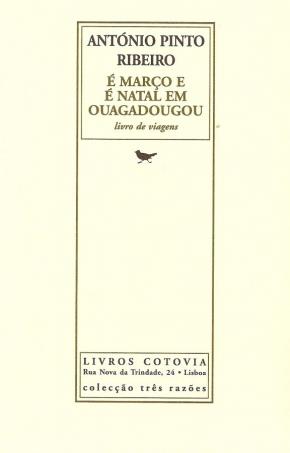
Your book It’s March and Christmas in Ouagadougou (Cotovia, 2010) is part of an empiricist record of travel notes, impressions, feelings … When you arrive to a city, what are the first things you search for, in terms of difference and recognition?
When I don’t know, I don’t search for anything. In general, I get informed before about the city: authors, films, landscape, places. I sometimes arrive with some imagination and previously built fantasies, but the people and the situations in the place are those that decide the impression I come back with, because today we always come back, don’t we? Travelling for work is productive because you are in real situations, nothing to do with a lost, amazed or disgusted tourist. It is the city in itself that stimulates me to write in one or another direction.
Is there a line of continuity in your travels?
They are work travels related to the cultural universe, and the cities have their circuits, either in Burkina Faso or in Santiago de Chile there is a library, cinema, lectures, and street citizens, and everything fascinates me a lot. Rural areas must be very different.
You go to Buenos Aires, Tokyo, Shanghai, Rio and your attention is called by the common elements of urban culture, the café, the bookstore, the theatre…
The urban structures may be similar but the ways they are lived and occupied are different and it is from this difference that the condition of being a traveller results. A bookstore in the Amazonia is a bookstore but it has nothing to do with a conventional bookstore in Paris. There is a differentiation in the most formal structures, how they are organized, how they are provided, and the people and their choreographic way of occupying the city are those who continue to leave me a mark. And there are still the so-called culture shocks. Travel to China’s interior and you will feel lost despite your I-phone, I-pad and command of English. Cultural structures, in their depth, are very slow to change.
Which cities surprised you the most?
It depends on the reception, on emotional experiences, on the greater or lesser degree of strangeness or habit, on the people whom I spent my time with … Perhaps Rio de Janeiro left me an inevitable mark. And Santiago de Chile and Cape Town, in the end…
You express some discomfort with cultural tourists and festival visitors (for example in Fespaco, Burkina Faso), who show misfit paternalism towards what goes wrong in Africa. How to outline this without falling into a reactionary attitude?
You have to be demanding, to understand the context and be demanding as a result. There are things I cannot claim in Ouagadougou as if I were in Berlin, but I have the right and duty to demand dignity anywhere in the world. In fact, I stand neither for the condescension nor for the paternalism, always characterised by a strong colonial attitude.
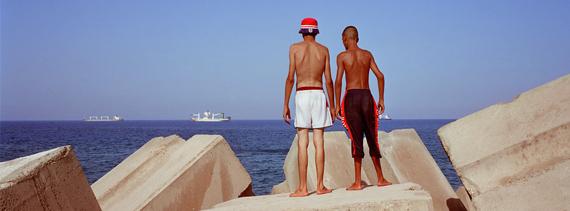 Photo by Kader Attia at the exhibition
Photo by Kader Attia at the exhibition
At the level of cultural policies with these countries, which are the worst defects of cooperation?
There is no cultural policy.
The cultural centres, which originated in the colonial period as control mechanisms of nationalistic representation and promotion of the language, in some cases managed to become interesting production platforms articulated with local artists, but it is very rare. Why?
What happens in most situations in Africa is that the great cultural centres of the cities are the only thing that exists, so the responsibility is great. Much depends on the director of the centre: when people are active, interested, intelligent and cultured things go well. They are the only possible platforms for the understanding between the local artists and intellectuals and the place to present local production. As for the Portuguese Cultural Centres, I think the focus should be, for example, presenting programs of France or Italy, and the reverse should also be valid because, after all, they are the place of presentation of African productions. It isn’t what happens, and what is presented is usually artless, nationalist and anachronistic. In the case of Portuguese Centres people have been there for 15 years with no relation with Portuguese contemporary culture, representing a “portugality” that only exists in their minds, and have always felt strangers in the host country. With exceptions, of course.
This originates from a larger problem of no linkage, no strategy or investment. As interesting experiences, you refer to the case of Brazilian cultural policy. What must we learn from Brazil in this matter?
A lot of things, for example the ability they had to create intermediate organizations between large institutions and the void. The Culture Points were among the most interesting things because they correspond to the scale of the place where they were installed, to the needs with a high level of demand.
Yes, we can be in the middle of Acre and in the Culture Point equipment for filming and computers are available. All this also spurs an increase in the quality…
We must learn from an amazing thing they discovered: a country needs to have pictures of itself, a country needs auto-representation and the best mechanism is cinema. Therefore, investment in cinema is not naive.
And so they passed from eight features a year to more than one hundred at the present time and regular presence of Brazilian films in cinemas.
And the festivals, the huge support to production and distribution. And another thing: they created the professorship of History of black presence in Brazil. They had to train 20,000 teachers, reinforced the Future Channel, always follow these situations. They show ability to dare, to try, to risk…
They do not have our reason belt.
We are too shackled, if only we knew to what…
What surplus value does the mobility culture in which we live bring to the Portuguese cultural context, in terms of creation of bridges and co-productions? Is there any strategy in sending people outside the country?
The idea that people have to travel and to confront with other cultures is the most interesting heritage of the European Enlightenment. Today, the Erasmus generation is much richer in terms of cosmopolitan experience than the previous ones. Very little may be programmatic in these individual experiences, but the stigma of “foreigners” ceased to exist upon them. As for the program “Inov”, the idea is very valuable and generous, but most of the times the strategy is wrong, especially with regard to the assessment processes of the internship and to the fact that these experiences abroad are of no avail at the return.
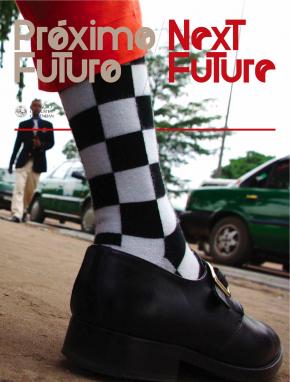 Cover of the magazine
Cover of the magazine
Back to your programming, you continue to balance the European production with these inputs from the outside world, which make us rethink our own creative exhaustion.
I find it very stimulating. There was a phase in which the programming was ideated in order to give visibility to non-European productions worth seeing. This phase was well done. But I wish we conceived a sort of place where new things are created from what their history once was, it is no longer a matter of window and showroom, it involves having a public and a community of artists who look at it differently. I am very grateful for the fact that the Gulbenkian garden has become place of enjoyment of Chinese, Ukrainians, and that very young people have lost their fear of attending places of culture.
We need to stop the sacralisation of cultural spaces…
It is the possibility of having an artistic community that shares that as an input to production, beyond a first step of curiosity…
As for the accountability of the artists, are you able to distinguish those who are permeable to fashion agenda and themes from those who really have something to say?
I make an effort to make it happen. I have great regard for the artists: I think they are essential for any city and community. They have a huge responsibility because they deal with emotions and human frailty. But my relationship with them is prolonged in time, I follow them and I don’t wish to have any kind of intimacy with an artist just because he/she is an artist. I am interested in the works, discourses, proceedings; I don’t care about their privacy. Clearly, there are always relationships not limited to work.
Following the program Next Future *, which will end this year, what are you going to do?
I have no idea: I will surely continue to teach in universities, if possible, to write. Meanwhile, I asked the manager of the administration for the Foundation to evaluate the program, something that is fundamental, we’ll see…
* it starts on May 12th at the Calouste Gulbenkian Foundation, Lisbon.
António Pinto Ribeiro was born in Lisbon.
His academic training was done in the areas of Philosophy, Communication Sciences and Cultural Studies. It is in these areas that he has developed the research and theoretical work published in specialized magazines. He is Lecturer in several international universities. Besides his activity as a researcher and teacher, he has had a practice of artistic programming and cultural management with the organization of various programs, festivals and national and international exhibitions.
He was artistic director of Culturgest (cultural centre in Lisbon) since its inception in 1992 until April 2004. He was general programmer of the Cultural Forum “State of the World” (2006/2007) at the Calouste Gulbenkian Foundation, coordinator of the Gulbenkian Program “Creativity and Artistic Creation” (2004-2008) and general programmer of the Gulbenkian Program “Distance and Proximity” (2008). He currently coordinates the Gulbenkian Program “Next Future”, until 2011.
His published work includes: The Dance of the Age of Cinema (1991), Temporary Contemporary Dance (1994), For Example the Chair - Essay on the Arts of the Body (1997), Hand-to-hand - On the Possibilities and Limits of the Critics (1997), Is Being Happy Immoral? - Essays on Culture, Cities and Distribution (2000), Melancholy (novel, 2003), Shelters - Cities Conditions and Power of Culture (2004), The Pursuit of Scale - five disciplined exercises about contemporary culture (2009) and It’s March and Christmas in Ouagadougou (Cotovia, 2010).
Translation: Alice Girotto